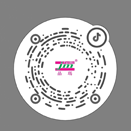2024
10-21
How much do you know about the pretreatment process of powder electrostatic spraying equipment?
The surface cleaning steps of the workpiece before powder spraying equipment treatment are as follows: "three in one" cleaning → water washing → water washing → chemical conversion (chromization) → water washing → water washing → drying (60-85 ℃).
(1) Degreasing:
It is to remove oil, grease, and other pollutants from the surface of the workpiece before erosion to obtain a clean surface. During this process, inhibitors are usually added to prevent oxidation of the cleaned aluminum surface. The degreasing temperature is generally controlled at 50-70 ℃, and the degreasing time is 3-4 minutes, depending on the surface condition of the workpiece.
(2) Washing with water:
In each pre-treatment process of the electrostatic powder coating assembly line, there is one or two water washes to remove chemical solutions from the surface of the workpiece and prevent cross contamination between the solutions. The first cleaning after degreasing is usually done with tap water or well water, but the last few washes require deionized water to avoid poor adhesion and corrosion issues. The conductivity of the deionized water used should not exceed 30 μ S/cm. If it exceeds the standard, the salt (calcium ions) in the hard water will deposit on the surface of the workpiece during the drying process, forming corrosion points and causing the coating to produce bubbles. The first washing tank has no temperature limit, but the chromium washing process requires a water temperature not exceeding 50 ℃. If the washing temperature is too high, the chromium film may be washed away. The washing time is usually a few minutes, and stirring the workpiece or stirring water with air can improve the washing effect.
(3) Alkali corrosion:
The aluminum surface of the powder coating production line usually has a thin natural oxide layer, which must be removed before chroming. In this process, inhibitors need to be added to prevent the cleaned aluminum surface from being oxidized. The alkaline etching temperature should be controlled at 50-70 ℃, and the alkaline etching time should be controlled at 7-8 minutes.
(4) Neutrality:
The insoluble acid residue from the alkaline etching stage is removed in the neutralization stage. These residues include metal or non-metal oxides (such as magnesium oxide, silicon oxide, etc.), which do not dissolve in alkaline solutions and can be removed with nitric acid or sulfuric acid. Many manufacturers now use neutralizing solutions containing chromate salts to prevent further oxidation of aluminum surfaces. Silicon oxides can be removed by fluorides. The immersion time depends on the condition of the pickling residue, generally ranging from 30s to 5min. Neutralization treatment is usually carried out at room temperature.
(5) Chemical conversion (chromization):
Chromation is the most commonly used chemical conversion pretreatment method for aluminum materials. The chrome coating improves the adhesion between aluminum metal and the coating, and enhances the anti-corrosion performance of the coating. If the chromium coating is too thick, although the anti-corrosion performance is improved, the adhesion of the powder decreases after spraying with a powder spraying device.

 :中文
:中文 :English
:English









